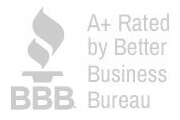How the Series LLC Helps Captive Insurance Companies.
The Delaware Series LLC is often used in sophisticated industries. Examples include regulated finance, real estate investment, and oil field financing. Captive insurance is another application where the Delaware Series LLC has become popular.
The captive insurance industry has been able to benefit from using the Delaware Series LLC as a means to separate liability under one regulated entity. We discuss how to structure a captive insurance company as a Series LLC, as well as some of the history behind series insurance captives.
What Is Captive Insurance?
Insurance captives are complex entities that allow a group of companies to insure themselves against their own business risk. Captive insurance is different from commercial insurance where companies simply buy into a fund pool. Policyholders in an insurance captive wholly own the insurance company.
Policyholders can exercise control over the insurer’s operations and even benefit from underwriting profits. The captive insurance model can promote greater efficiency in coverage and lower insurance premiums.
How To Structure a Series LLC Captive Insurance Company
The Series LLC fits well with creative approaches to legal structures because of its flexibility. State laws typically abide by a core licensing approach for licensing captive insurers. This approach licenses the Series LLC entity, referred to as a “core” entity, as a special purpose captive.
The core captive has the ability to grant individual insurance licenses to associated protected series under its own Certificate of Authority granted by the state Insurance Commissioner. The core captive then uses protected series to hold the funds of individual policyholders as associated assets to protect them from cross-liability.
The Delaware Series LLC and Captive Insurance
In 2010, Delaware licensed the first Series LLC as a captive insurance company and created the Series Captive Insurance Company (SCIC). The statute was later revised in 2015 to formalize the licensing, taxation, reporting, and governance requirements for SCICs.
The Series Captive Insurance Company is often described as a “hub in spoke” structure. The business of providing insurance to individual policyholders is conducted strictly through the protected series.
The Series LLC functions as an administrative hub. Fees and policy premiums pass through the Series LLC entity down to the protected series. The main Series LLC represents a management service organization, or MSO. The MSO is tasked with managing the individual protected series.
The Delaware statute treats each protected series in a SCIC as a separate insurance captive. This means that each series is required to comply with regulatory requirements.
Requirements include:
- Maintaining a resident manager;
- Hosting annual meetings; and,
- Adopting a conflict of interest policy.
The MSO can fulfill these requirements for all protected series.
Additional Filings for Insurance Captives
The Delaware Secretary of State does not require Series LLCs to file annual reports. However, Delaware’s Department of Insurance now requires Series Captive Insurance Companies to file separate annual reports for each protected series.
If a protected series of a series captive is managed by a separate board, then the protected series is required to hold its own annual meeting. Under the statute, the financial condition of each series must be accounted for through an audit.
Delaware Series Captives vs. the Protected Cell Companies
Prior to the Series LLC, captive insurance companies tried implementing Protected Cell Companies (PCCs) to separate the liabilities of individual captive insurers. A PCC is similar to a Delaware Series LLC in that it provides segregation of assets through asset chamber “cells”.
Each cell is capable of operating independently from one another while ownership is consolidated under a core entity. Separate cells which encapsulate the business of insuring policyholders, while the core insurance company acts as an administrator. Individual cells of a PCC can be regulated in conjunction with the core entity.
How Protected Series Improve Upon the Protected Cell Company
The cells of a Protected Cell Company are less empowered than the protected series of a Delaware Series LLC. The PCC statute does not allow individual cells to contract in their own name. These restrictions limit the Protected Cell Company’s ability to provide asset protection. Cells of a PCC must have the core entity contract for them. Legal practitioners see this as being unnecessary liability exposure for the core entity.
In contrast, the Delaware LLC Act provides protected series of a Series LLC with legal personhood. Protected series are able to contract, sue or be sued, own separate assets and hold title to real property entirely in its own name.
The ability of protected series to enter into contracts provides significant advantages for captive insurance. For example, protected series enable insurance captives with better access to reinsurance markets. The PCC structure would only allow insurance captives to achieve reinsurance by forming and maintaining additional entities existing outside of the captive. This strategy not only incurs greater cost, but also greater liability. Captive insurance companies can promote administrative efficiencies by implementing the Delaware Series LLC. This can result in both cost savings and superior liability protection.
Adoption of The Series Captive
Delaware’s innovation in creating the Series Captive Insurance Company has influenced other states to adopt similar laws. Montana now permits Series LLCs to be licensed as special purpose captives. Tennessee has also amended its Limited Liability Company Act to allow a “series protected cell” structure.

